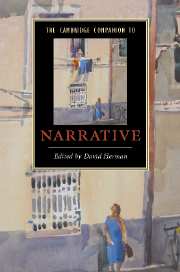3 - Story, plot, and narration
from Part II - Studying narrative fiction: a starter-kit
Published online by Cambridge University Press: 28 September 2007
Summary
One fine summer morning - it was the beginning of harvest, I remember - Mr. Earnshaw, the old master, came down stairs, dressed for a journey; and, after he had told Joseph what was to be done during the day, he turned to Hindley, and Cathy, and me - for I sat eating my porridge with them - and he said, speaking to his ooon,
“Now my bonny man, I'm going to Liverpool, to-day . . . What shall I bring you? You may choose what you like: only let it be little, for I shall walk there and back; sixty miles each way, that is a long spell!”
Hindley named a fiddle, and then he asked Cathy; she was hardly six years old, but she could ride any horse in the stable, and she chose a whip.
He did not forget me, for he had a kind heart, though he was rather severe, sometimes. He promised to bring me a pocketful of apples and pears, and then he kissed his children good-bye, and set off.
This is how the story of Emily Brontë's novel, Wuthering Heights, begins. Like most stories, it begins with a beginning. This is a more important point than it may seem: all stories move only in one direction, forward through time. If there is a knowable beginning, that's where they begin. If there is a knowable end, that's where they end. The process of telling is the story's narration, and at this point Ellen (Nelly) Dean, a servant in the household, is its narrator. This distinction between story and narration is also important. It is an implicit acknowledgment that a story is understood as having a separate existence from its narration. As such, it can be told in different ways by different narrators. Were Hindley or Cathy our narrator at this point, the narration of this story would be different, with different words, different emotional inflections, different perspectives, and different details. These narrators might even contradict each other.
- Type
- Chapter
- Information
- The Cambridge Companion to Narrative , pp. 39 - 51Publisher: Cambridge University PressPrint publication year: 2007
- 29
- Cited by



